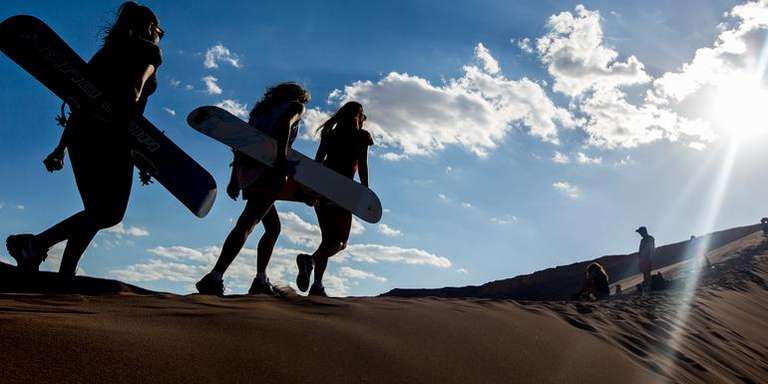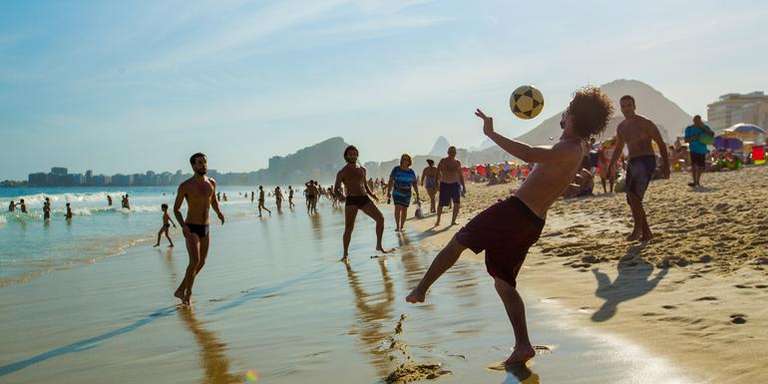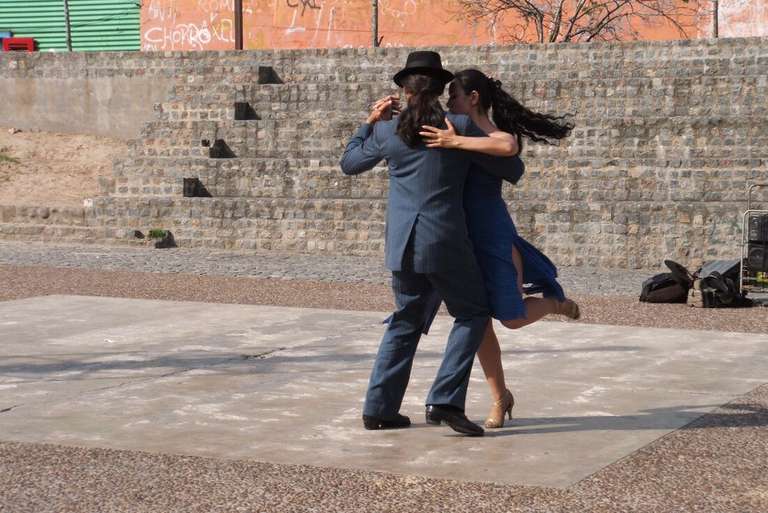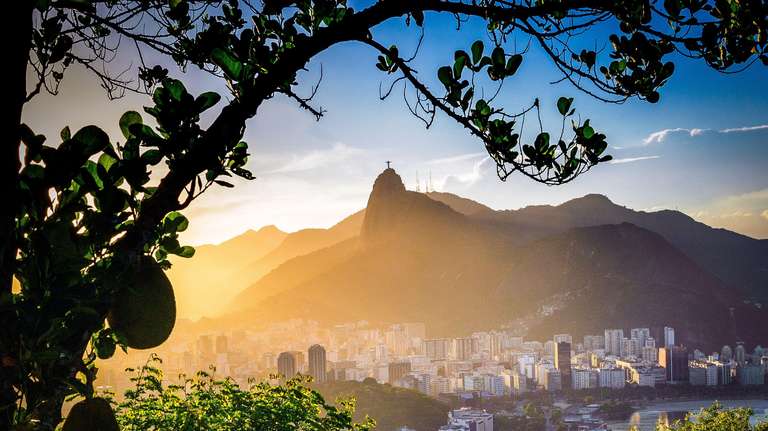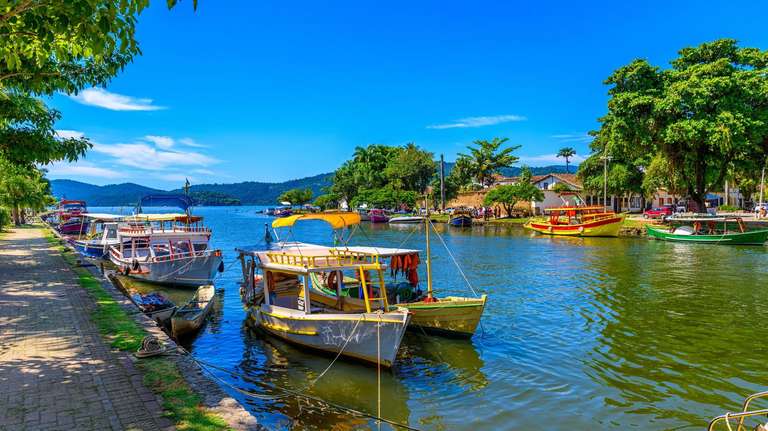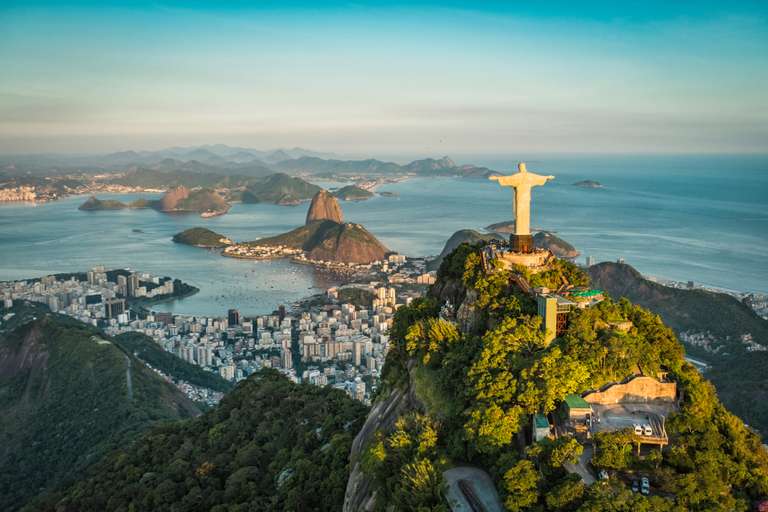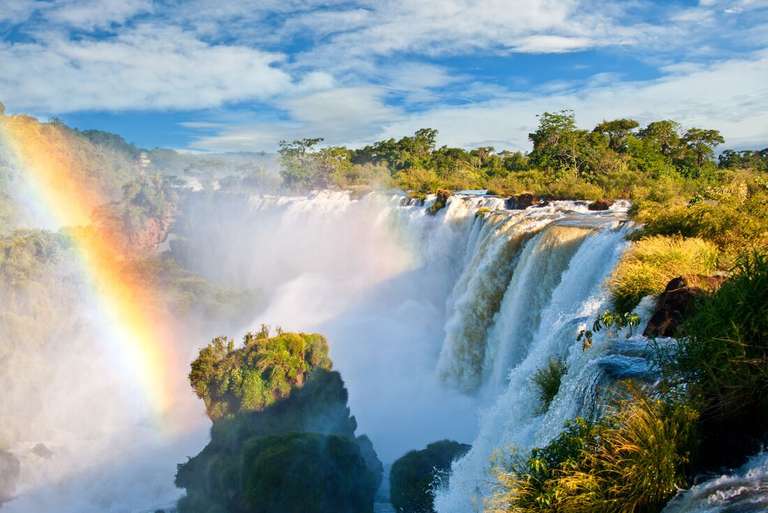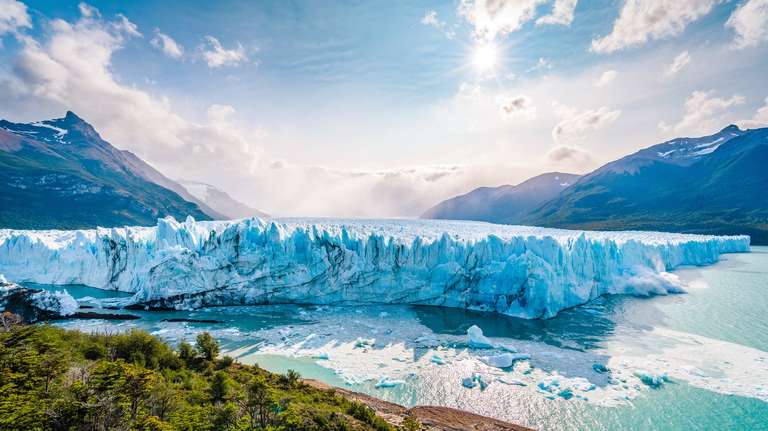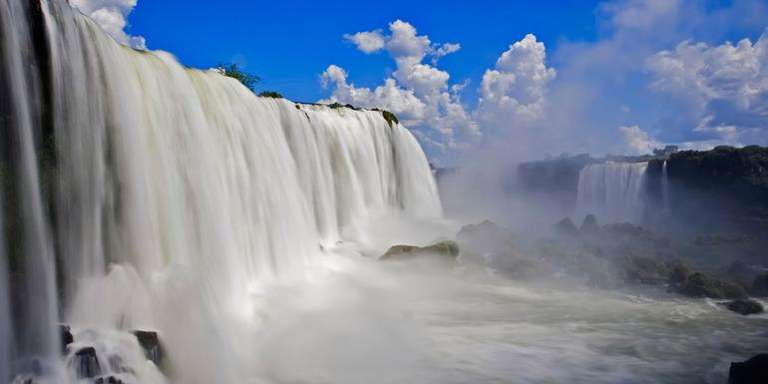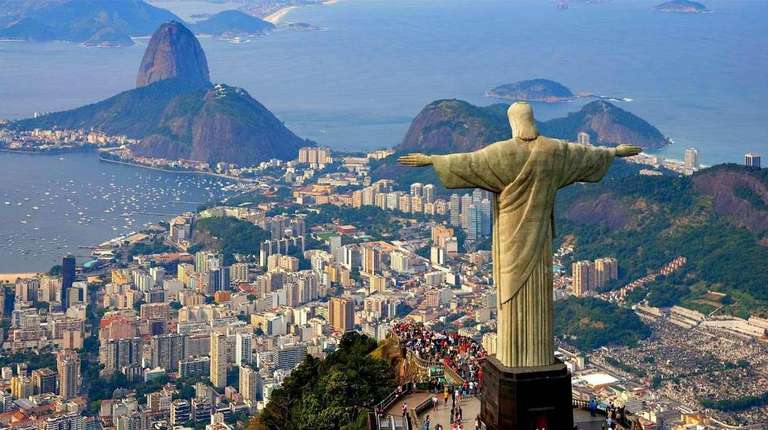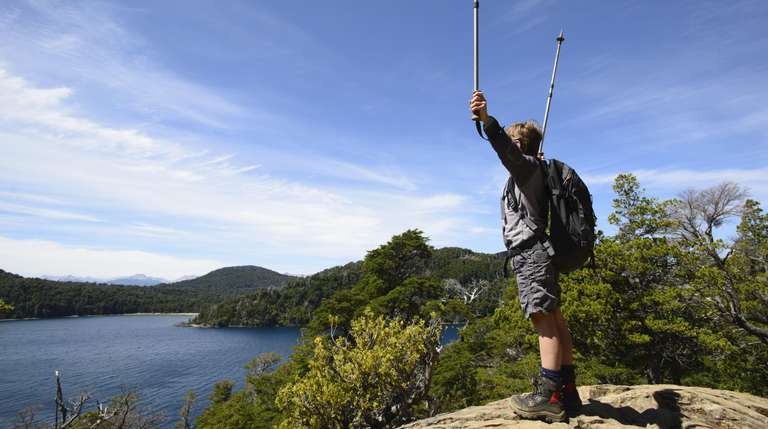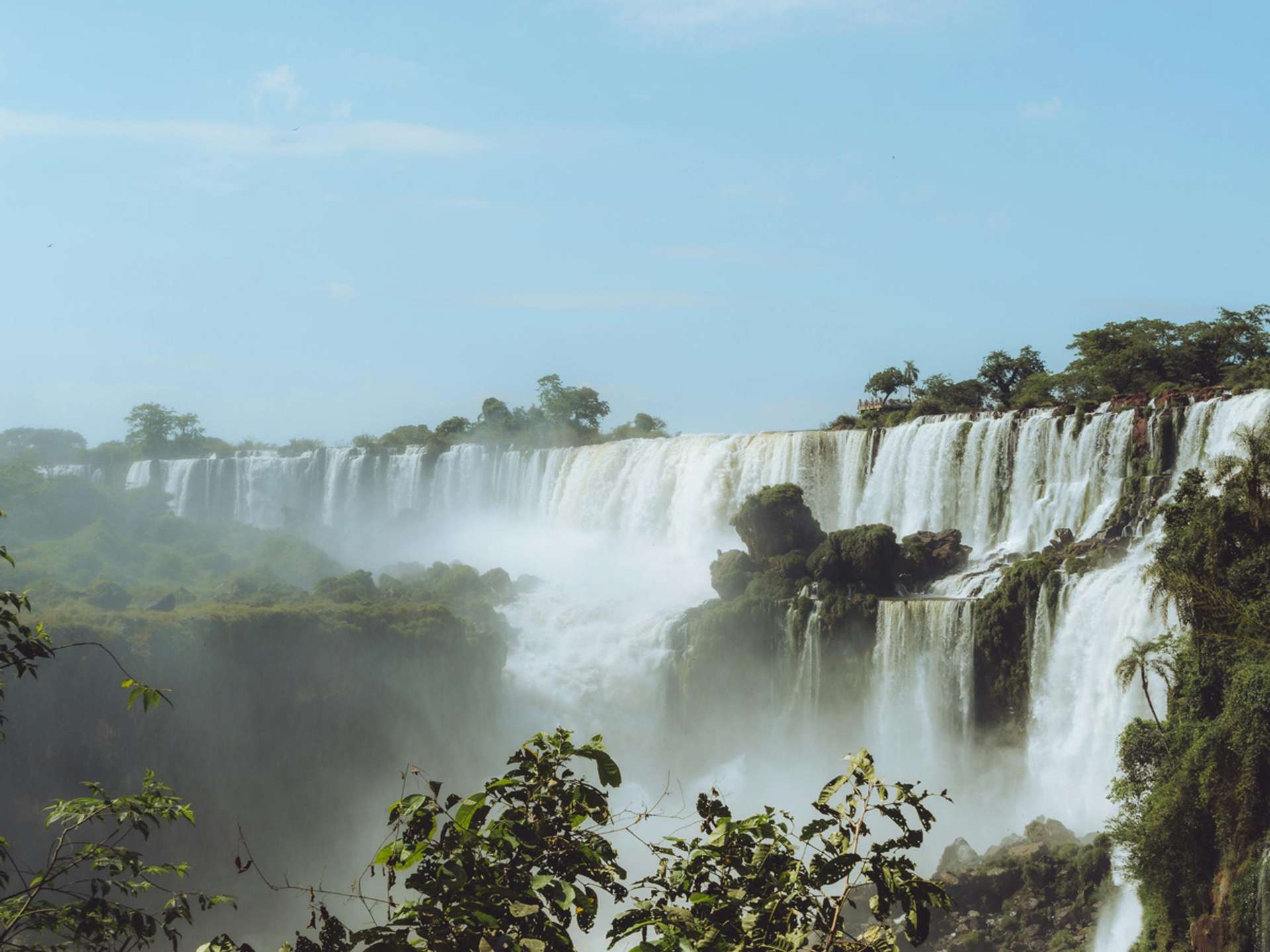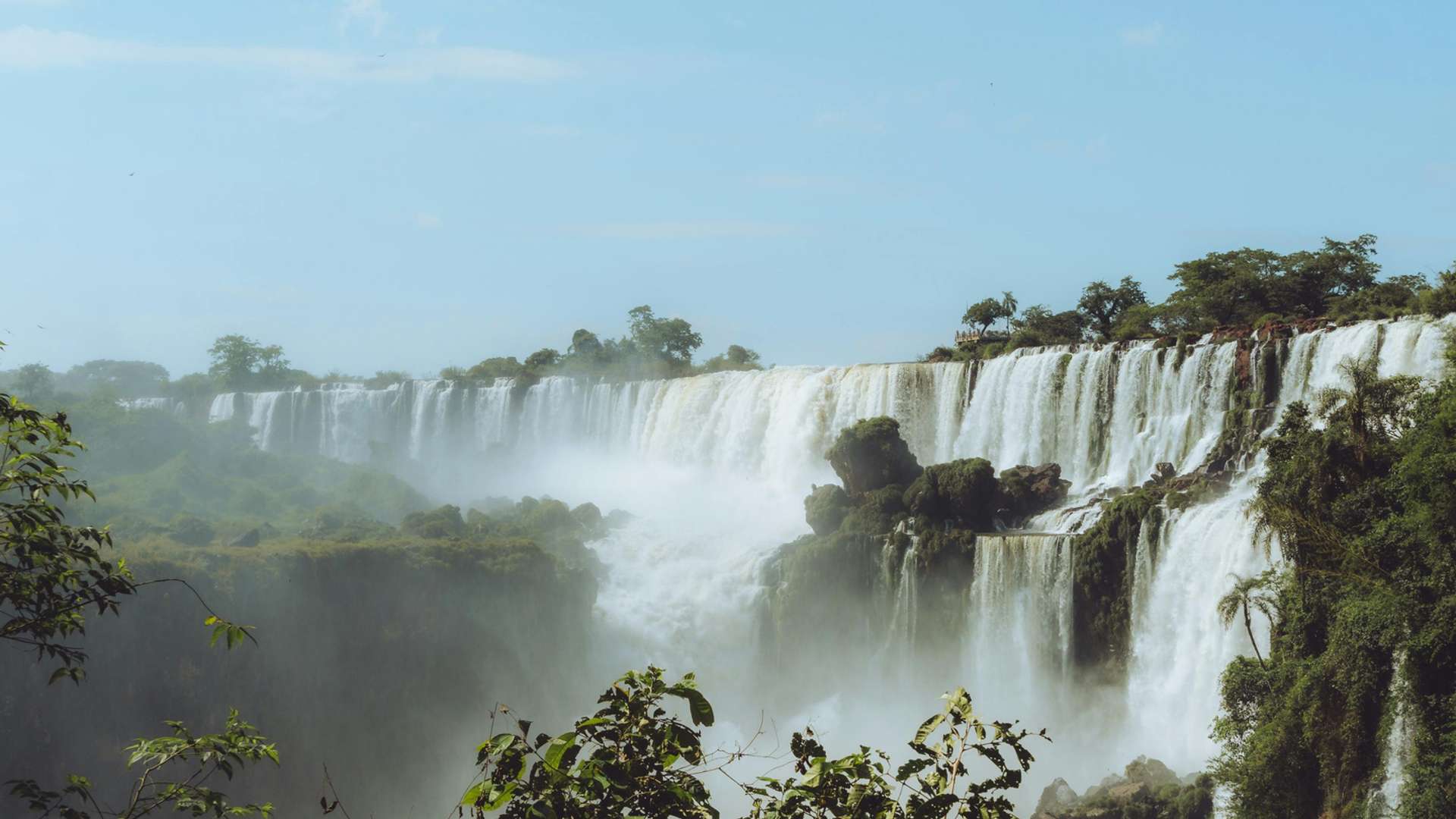
Iguazu Falls Tours
The iconic Iguazu Falls should be on your must-visit site if you are on an Argentina tour. This breathtaking natural wonder straddles Argentina and Brazil, offering a spectacle of 275 cascades, including the iconic Devil’s Throat, plunging 80 meters into the abyss. It is an absolute force of nature that is at once awe-inspiring and intimidating. Brace yourself for an unforgettable adventure on an Iguazu Falls tour. The tour highlights include thrilling boat rides on the Iguazu River, a close-up view of the falls, and wildlife sightings in Iguazu National Park. You will find our Iguazu Falls tours below.
We guarantee the best prices on all our tours. If you find a lower price within 24 hours of booking, we'll match it.
Note: Prices may vary based on availability and demand.
10 Best Iguazu Falls January Deals
Grab our exclusive January Deals on Iguazu Falls tours — limited-time massive discounts you won't want to miss!
See all Argentina January Deals
10 Best Tours in Iguazu Falls
Discover our highly acclaimed tours in Iguazu Falls, based on reviews and times booked.
See all Iguazu Falls Tours
Iguazu Falls Tour Reviews
Guest reviews from travelers on tours in and around Iguazu Falls
I can't say enough nice things about the team. A friend and I used their services for an 8-day trip to Argentina. During that time, we visited Iguazu Falls, El Calafate, and Buenos Aires, where we caught a Boca Juniors match. Amazing experience. We really appreciate how they personalize the itinerary to your liking. Everything from the hotels to the transfer services to the tours were wonderful. Thank you, Patricio, Antonella, and Florencia.
The team lead by Antonella and Julia were absolutely amazing! I strongly recommend them. Sometimes you visit a place and you are not that interested in returning....Argentina is not the place for us! We can't wait to go back and work with Julia and Antonella again. Every recommendation they made was a great fit for us. The foodie tour, the Asado BBQ cooking school, the Tango show...were all so well done (5 stars). The hotels, tour operators, and restaurant recommendations were perfect. It was such a pleasure landing at the airports and having someone meet us for the ground transfers. We didn't have to think about the basics. Antonella and Julia did that for us so we could focus on the things we wanted like the culture, the sights, the history, the food, and the warm people of Argentina. Antonella checked in on us almost daily and was very available for last minute changes and reservations. It was like having our own personal concierge, definitely not the normal travel agent experience.
I usually don’t post reviews, but I wanted to thank the staff for helping to make our 2 week Argentinian adventure as flawless as possible. First Melina helped plan our itinerary, which was quite challenging since it included 4 flights and 5 hotels! The activities she suggested, from ice trekking to Tango shows were all fun and unique. The transportation to and from activities and hotels was stellar and such a time saver. We chose mid range hotels and each was clean and so fitting for the location we were at. Milagros took over once our itinerary was set and what a bonus that was! What stood out most was how graciously she accommodated all the issues we had once we began our trip - and there were a lot. From lost luggage to last minute flight and hotel changes, Milagros handled everything graciously and without an upcharge to do so. The farewell bottle of wine was such an unexpected surprise. Muchas Gracias, team!
We just returned from a 5-week trip to South America. The team was AMAZING. They helped us plan a very complex itinerary that included multiple cities in Chile and Peru, a side-trip to Easter Island, Machu Picchu and the sacred valley, and finally Iguazu Falls in Argentina and Peru. The advice they gave and the hotels they chose were truly exceptional. The detailed day-by-day itinerary was very helpful, and all of their in-country partners (e.g., drivers, tour guides) were terrific. Everything went perfectly. Best travel experience ever! Thank you, Analia and Antonella!!!
I had an outstanding experience working with the travel team for my trip to Argentina. From the very beginning, their team was professional, responsive, and incredibly knowledgeable about the best destinations and experiences. They tailored the itinerary perfectly to my preferences, ensuring a seamless and stress-free journey. Every detail, from accommodations to excursions, was well thought out, and their local expertise truly made a difference. I especially appreciated their prompt communication and willingness to accommodate any requests. Thanks to the team, my trip was not only memorable but also hassle-free. I highly recommend them to anyone looking for a well-organized and authentic travel experience in Argentina!
Our travel agent, Lucila, designed the best trip ever. Everything was just perfect—from the hotels to the wild experiences. We enjoyed the trip so much; every day felt like a dream. I look forward to organizing a new adventure around the world with Lucila. Everything was just AMAZING! Thank you, Lucila and team!
Create a customized tour to Iguazu Falls and Argentina
Traveling to Iguazu Falls? Chat with a local travel specialist who can help organize your trip.
Keep Exploring Iguazu Falls
Related Destinations
Trending Travel Guides
- Perito Moreno Glacier: The Best Ways to See It
- Buenos Aires to Iguazu Falls: How to Travel
- Argentina Wine Regions: The Ultimate Guide to the Top 5 regions
- How to get From El Calafate to El Chalten
- Things to Do in Argentina
- 14 Epic Things to do in Patagonia
- 10 Best Places to Visit in Argentina
- Best Time to Visit Argentina
- Great Argentina Itineraries: How Many Days to Spend?
- Argentina in One Week: 4 Recommended 7-day Itineraries to Argentina
- Argentina in 2 Weeks: 3 Recommended 14-day Itineraries to Argentina
- Argentina in 10 Days: 3 Recommended 10-day Itineraries to Argentina
- Argentina in 3 Weeks: 3 Recommended 21-day Itineraries to Argentina
- Argentina in December: Weather, Hiking and More!
- Argentina in July: Weather, Bustling Mountains and More!
- Planning a Trip to Argentina: All You Need to Know
- Buenos Aires to Ushuaia: Top 3 Travel Routes
- Top 7 National Parks in Argentina
- Honeymoon in Argentina: Top 7 Romantic Destinations
- Buenos Aires to Bariloche: Top 3 Travel Routes
- Summer in Argentina: Sun-Kissed Adventures & Warm Weather
- Argentina in 5 Days: 3 Recommended 5-day Itineraries to Argentina
- Santiago to Buenos Aires: Top 3 Travel Routes
- Lima to Buenos Aires: Top 3 Travel Routes
